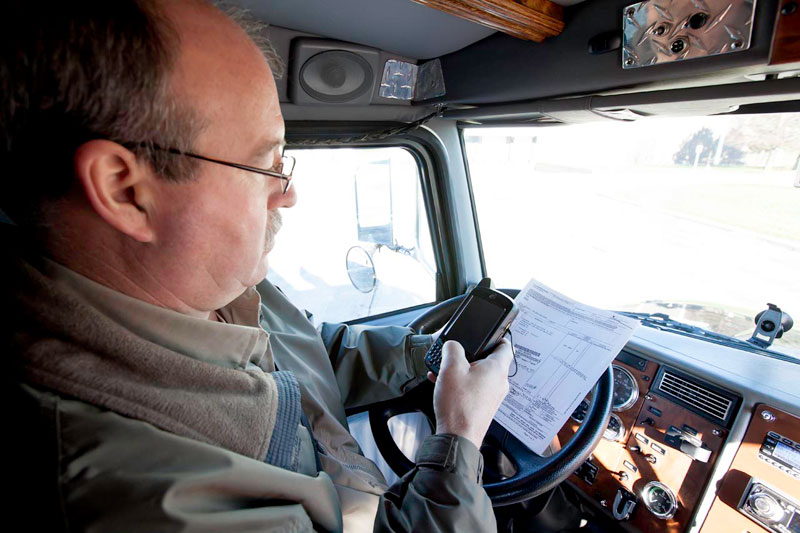Mobile Radio Installations in Your Fleet Vehicle During Covid: How to Stay Safe

 The coronavirus pandemic continues to disrupt our daily operations on a national scale, with no end in sight. Many organizations that set up temporary measures to mitigate the virus’s spread are now considering making these changes permanent. And as these organizations become more adept at operating amid a pandemic, the tools that minimize contact in professional and social settings become increasingly popular.
The coronavirus pandemic continues to disrupt our daily operations on a national scale, with no end in sight. Many organizations that set up temporary measures to mitigate the virus’s spread are now considering making these changes permanent. And as these organizations become more adept at operating amid a pandemic, the tools that minimize contact in professional and social settings become increasingly popular.
One tool that has proven highly valuable is the two-way radio. Long reserved for first responders, security staff, and hospitality workers, the two-way radio finds value in nearly all industries during the pandemic. And not just on-site, but in fleet vehicles for organizations as well.
Two-Way Radios in the Vehicle
Two-way radios deliver a reliable form of communication when cell phones can’t, such as while driving. Many federal and state laws prohibit the use of cell phones while driving but allow for the use of two-way radios. Cell phones require a series of the user’s touch commands to facilitate communication. This process is distracting to the operator of the vehicle and is incredibly unsafe, in addition to being illegal.
By contrast, vehicle-mounted two-way radios often only require one touch to open the line of communication, allowing the driver to continue focusing on the road and following all driver safety guidelines. These radios are not illegal to use while driving, although the drivers should some basic safety guidelines, such as:
- Keeping their eyes on the road at all times. Distracted driving kills thousands of people every year. If the driver cannot keep their eyes on the road while operating a one-touch two-way radio, they should wait until they can pull over to begin communicating.
- Ensuring that the radio is easy to use and can be accessed without breaking eye contact with the road. Mounting the radio near the steering wheel is one of the best ways to do this.
- Using Bluetooth headsets is another option that will allow the driver to continue driving without distraction.
- Keeping conversations brief and to the point to minimize unnecessary risk.
- Keeping the volume at a consistent level, which minimizes the need to make volume adjustments.
A couple great options of Motorola Portable Digital Radios are:
- Motorola CM200d:
- This radio features both an analog and digital display, dual capacity Direct Mode, easy connection to your crew, numeric and alphanumeric displays, digital mobile radio standards compliant, norrowbanding compliance, voice announcements and more.
- Motorola XPR 2500
- This radio features a compact and capable unit, integrated voice system capability, twice the calling capacity, clear voice communication, digital display, low profile mounting bracket, a hand microphone and more.
These best practices serve as a good guideline for anytime a driver uses a two-way radio. However, with the increase in these radios’ use as a response to the pandemic, they are especially pertinent now.
Two-Way Radios & COVID-19
One of the most significant elements of minimizing the virus’s spread has been to shift to contactless solutions whenever possible. For many companies and organizations, this has meant adopting new technologies that facilitate remote work. Individuals have increasingly started to use delivery services and contactless solutions whenever possible, as well. These behavior shifts mean that there are many different scenarios where two-way radios in fleet vehicles could be more useful than it has been in the past.
There are many more delivery drivers on the road, distributing everything from essential groceries to take-out meals to pharmaceuticals. Two-way radios offer an easy, legal way for these various drivers to coordinate deliveries efficiently and communicate effectively.
And while first responders have been using two-way radios for decades, there has been a surge in demand for nontraditional care, such as traveling nurses that can treat patients in their home. These clinicians may need to consider implementing these tools to ensure that they can communicate quickly and reliable during an emergency.
And these are just a few examples of services that may not have needed two-way radios in fleet vehicles before but find utility in adding them during the pandemic. There are many other scenarios where a company might find value in adding this type of communication to its fleet. It merely depends on their product or service and how their delivery model has changed to respond to market demand for contactless solutions.
These radios are the ideal solution to facilitate mobile communication. They can enable group or one-on-one conversations easily. They offer immediate and reliable communication. Many have GPS tracking capabilities, which means that employers always know where their workers are and plan accordingly to minimize wasted fuel and time. And they are sanitary. As long as proper sanitation protocols are followed, multiple employees can use the radios across shift changes without presenting an opportunity to spread the virus. Two-way radios are simply one of the safest and most effective ways to enable communication during a pandemic. They may prove to be so useful that many companies continue to use them long after the pandemic has been contained.
